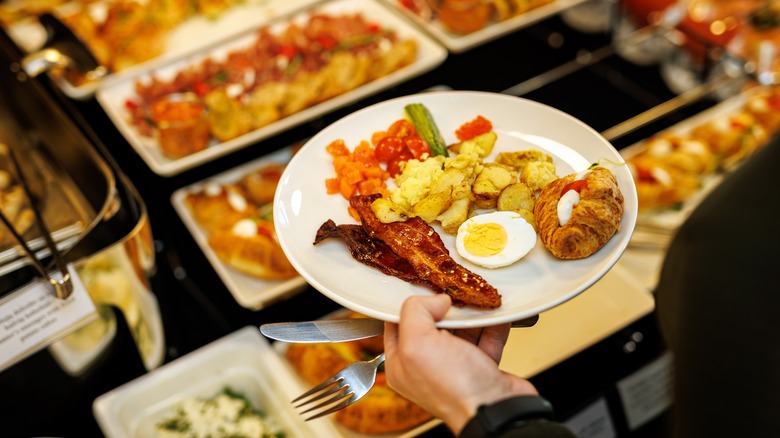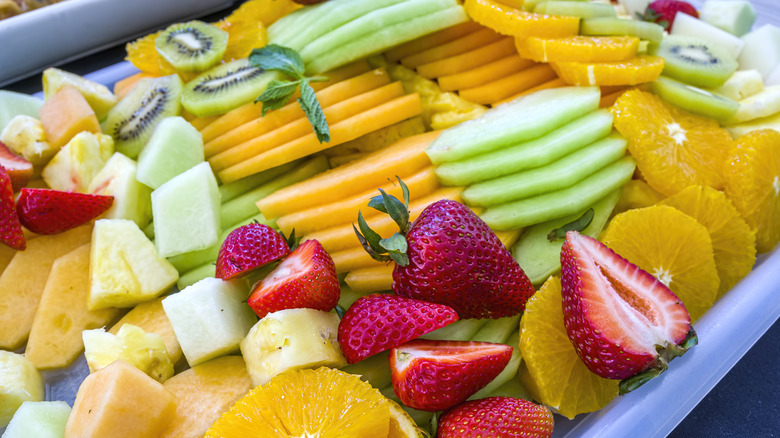The Red Flag You Should Look Out For When Eating At A Breakfast Buffet
If you're a chronic worrier about food safety, eating at a breakfast buffet perhaps isn't the wisest idea for your peace of mind: With food left out in the open for longer periods, there's the distinct possibility of pathogens getting into your meal. But some buffet foods are riskier than others — one textbook example is fresh fruit.
Specifically, the problem is pre-cut fruit. Since it sits out in the open with much of its surface area exposed and without being fully enclosed by its peel, it's effectively unprotected from any bacteria like salmonella or listeria that could get in there — and no, you can't rely on the smell test to detect these pathogens. On the flip side, this means that fruits that aren't cut or peeled (whole bananas, for example) should be generally safe from this particular contamination risk when they're found on a breakfast buffet. On the other hand, cantaloupe has been more often associated with food safety issues when served cut.
Of course, plenty of other food sits out on a breakfast buffet with its surfaces exposed — but there's another factor that makes cut fruit a bit riskier. It generally isn't cooked — by heating fruit or any other food to above 140 degrees, most pathogens are killed off. So, fruit cooked down into a compote (for example) is less of a problem.
Some other factors to consider with breakfast buffet fruit
Of course, just because cut fruit is more hospitable to pathogens, it doesn't mean you're guaranteed to get sick from eating it. Some other factors play into just how safe that chopped melon or sliced apply might be. For one, cut fruit is safer if it's stored below 40 degrees – the ideal temperature for a refrigerator – so if the buffet keeps that cut fruit in a refrigerated zone rather than just in a bowl out on a table, it's safer.
Next, there's the question of how long the fruit has been sitting out on the buffet. The USDA recommends not leaving cut fruit and vegetables out for more than two hours, so fruit that doesn't sit out for long is likely safer. That said, diners are unlikely to know how long fruit has been sitting out for unless they've been keeping watch for an unreasonably long time. However, you can keep an eye out to see how much turnover the buffet is receiving: If there are a lot of diners and service staff regularly refilling and replacing items, that fruit is less likely to have been out for so long.
Finally, you shouldn't assume that fruit that isn't cut is automatically good to go. It's still recommended that you wash whole fruits before eating them, and while a buffet should do this, it won't necessarily be easy to verify if that's happened — consider washing this fruit if you're picking it up.

